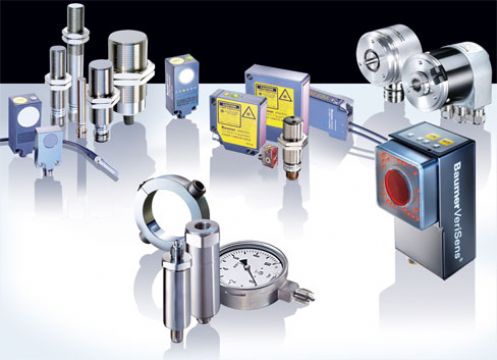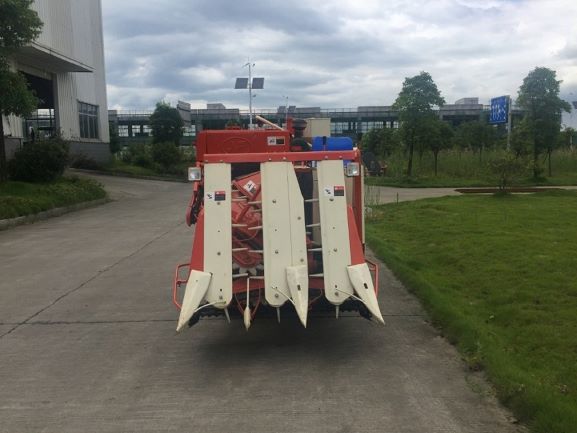 How should the sensor be chosen? Modern sensors are really dazzling. In principle and structure are also very different, then how should we choose? This should be based on the purpose of measurement, measurement of the object and the measured environment to a reasonable choice.
How should the sensor be chosen? Modern sensors are really dazzling. In principle and structure are also very different, then how should we choose? This should be based on the purpose of measurement, measurement of the object and the measured environment to a reasonable choice. 1, according to the measurement object and measurement environment to determine the type of sensor to conduct a specific measurement work, first of all to consider what principle of the sensor, which requires analysis of many factors before they can be determined. Because, even if it is to measure the same physical quantity, there are many kinds of principle sensors available for selection. Which kind of principle sensor is more appropriate, then we need to consider the following specific problems according to the characteristics of the measured and the use conditions of the sensor: the size of the range; The measured position of the sensor volume requirements; measurement method is contact or non-contact; signal extraction method, wired or non-contact measurement; sensor source, domestic or imported, the price can withstand, or self-developed.
2, the choice of sensitivity In general, in the linear range of the sensor, the higher the sensitivity of the sensor the better. Because only the sensitivity is high, the value of the output signal corresponding to the measured change is relatively large, which is advantageous for signal processing. However, it should be noted that the sensitivity of the sensor is high, and external noise that is not related to the measurement is easily mixed in, and it is also amplified by the amplification system, which affects the measurement accuracy. Therefore, it is required that the sensor itself should have a high signal-to-noise ratio, and the dedication should reduce the plant disturbance signal introduced from outside.
3. Frequency response characteristics The frequency response characteristic of the sensor determines the frequency range to be measured. It must maintain the undistorted measurement conditions within the allowable frequency range. Actually, the response of the sensor always has a certain delay. The shorter the delay time, the better.
The frequency response of the sensor is high, and the measurable signal frequency range is wide. Due to the influence of the structural characteristics, the inertia of the mechanical system is large, because the frequency of the measurable signal of the sensor with low frequency is low.
4. Linear range The sensor's linear range refers to the range where the output is proportional to the input. In theory, in this range, the sensitivity remains constant. The wider the linear range of the sensor, the larger the range, and can guarantee a certain measurement accuracy. When selecting a sensor, when the type of the sensor is determined, it first depends on whether or not the range satisfies the requirement.
5. The ability of a stability sensor to remain unchanged for a period of time is called stability. The factors affecting the long-term stability of the sensor are not only the structure of the sensor itself, but also the environment in which the sensor is used. Therefore, for the sensor to have good stability, the sensor must have a strong environmental adaptability.
Before selecting the sensor, it is necessary to investigate its use environment, select the appropriate sensor according to the specific use environment, or take appropriate measures to reduce the impact of the environment.
6. Accuracy Accuracy is an important performance indicator of a sensor, and it is an important link related to the measurement accuracy of the entire measurement system. The higher the precision of the sensor, the more expensive it is. Therefore, the accuracy of the sensor can be satisfied as long as it satisfies the accuracy requirements of the entire measurement system. It does not have to be selected too high. This makes it possible to select relatively inexpensive and simple sensors among the many sensors that meet the same measurement purpose.
Semi-harvester for Agriculture:
The semi-feeding harvester can complete the harvesting, delamination, separation of stems, removal of sundries and other processes at one time, and the Rice Harvester machine for obtaining grain directly from the field is mainly suitable for rice harvesting, wheat harvesting, and this reaper machine can adapt to deep mud feet. Under the serious harvest conditions, the grain cleanliness after harvest is very high, and at the same time, the stem integrity after harvest can be guaranteed, so that farmers can complete harvesting and granulation with a single operation, thus saving manpower and material resources and greatly reducing the burden of farmers.

Semi-harvester for Agriculture Technical Parameters:
1. Size: 3650*1800*1820 (mm)
2. Weight: 1480KG
3. Engine Fuel: Diesel
4. Harvest numbers line: 3
5. Harvesting width: 1200 (mm)
6. Cutting height range: 50-150 (mm)
7. Threshing depth control system: Manually
8. Adaptation crop height: 650-1200 (mm)
If you have any questions, please contact us directly. Crawler tractor for agriculture are produced by Hunan Nongfu with high quality and good appearance.
welcome you can visit our factory for inquiry, please send mail directly to us.
Semi-harvester for Agriculture
China Harvester Machine, Rice Harvester, reaper machine, Agriculture equipment
Hunan NongFu Machinery&Electronic.Co., Ltd. , https://www.nfagmachine.com